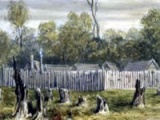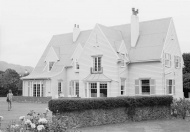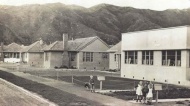Articles
War in Wellington

In 1846 fighting broke out in the Wellington region when Ngāti Toa chief Te Rangihaeata backed local Maori opposed to European settlement in Hutt Valley. The campaign claimed few lives but effectively ended Ngāti Toa resistance in the region.
-
Page 4 – A line in the bush
William Spain and Ngāti Tama chief Te Kāeaea sought to mark a boundary between European and Māori land in Hutt Valley.
-
Page 5 – An escalation of violence
In autumn 1846 fighting broke out in Hutt Valley, most notably at Boulcott's Farm.
The southern basin of the Hutt Valley, north of Wellington city. During the 20th century, Petone, Alicetown and the state-housing suburbs grew largely as working-class communities. Affluent residents clustered around leafy Woburn and Eastbourne. From the 1960s, middle-class home buyers headed for Maungaraki and the western hill suburbs.








